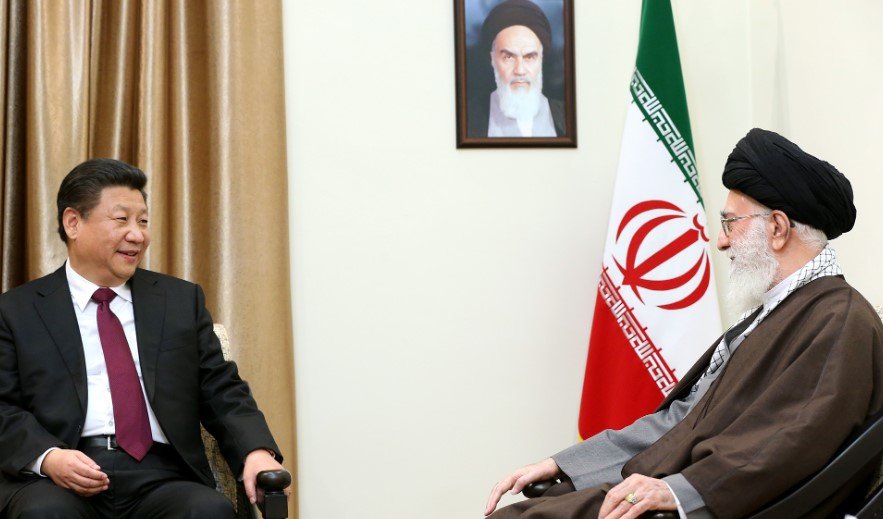Iran’s supreme leader has reportedly been moved to an underground bunker as Israeli strikes intensify, igniting global anxiety over a broader regional war.
Iran’s Supreme Leader Ayatollah Ali Khamenei is now believed to be sheltering in a heavily fortified bunker in Lavizan, northeast Tehran, alongside his family, as tensions with Israel erupt into some of the most dangerous military exchanges the region has seen in decades. Israeli airstrikes, targeting strategic defense and nuclear facilities across Iran, have killed hundreds, mostly civilians, according to Iranian health officials.
The development coincides with the G7 summit in Canada, where leaders have been blindsided by the sudden escalation. The war is no longer a distant diplomatic puzzle — it’s now unfolding in real time, with unpredictable consequences.
Bunker in Lavizan, a Symbol of Escalation
Iran International first reported that Khamenei and his inner circle, including his influential son Mojtaba, were moved to the bunker late Saturday. The site in Lavizan isn’t just any shelter — it’s part of a deeply buried complex long rumored to host elements of Iran’s military command infrastructure.
Two days before his reported relocation, top aides of Khamenei were killed in Israeli drone strikes. Tehran has neither confirmed nor denied their deaths, though the Supreme Leader publicly condemned Israel and promised “a bitter and painful fate” in return.
This was not routine saber-rattling.
Israel, for its part, has stated its goal clearly: dismantle Iran’s ballistic missile capabilities and eliminate nuclear ambitions that have been quietly advancing despite diplomatic efforts. But moving Khamenei to a bunker? That’s a message in itself.

The Death Toll and the Human Cost
Iran’s health ministry issued a sobering statement on Sunday evening. At least 224 people had been confirmed dead, 90% of them civilians. The number is expected to rise.
In Tehran, hospitals have been overwhelmed. Social media is flooded with videos showing destroyed residential blocks, injured children, and families fleeing neighborhoods in fear. While Iran’s military continues to fire missiles toward Israeli targets, many Iranians are watching from their windows, terrified, not patriotic.
One Tehran resident, speaking on condition of anonymity, told local journalists, “We’ve seen wars with Iraq. But this is different. This feels like the beginning of the end.”
Here’s a summary of the reported toll so far:
| Category | Number (Iran) |
|---|---|
| Total Reported Deaths | 224 |
| Civilian Casualties (%) | 90% |
| Hospitals Damaged | 14 |
| Military Installations Hit | 9 |
| Bunker Deployment Confirmed | 1 (Lavizan) |
That single bunker move may reshape how this war unfolds.
Netanyahu Defiant, G7 Leaders Rattled
Israeli Prime Minister Benjamin Netanyahu doubled down on Sunday night, calling Iran’s underground infrastructure “fair game” and warning that “no bunker is too deep.” His tone was firm, perhaps intentionally so, aimed at domestic audiences who have grown weary after years of low-intensity conflict with Iranian proxies.
The G7 leaders, already gathered in Alberta for high-stakes talks on global economic and climate challenges, suddenly found the Middle East dominating every side conversation.
One official, who spoke off the record, said, “This isn’t something that can be managed with statements anymore. This is on the brink of a fire we may not be able to contain.”
Bullet points from the G7 insider notes revealed:
-
France and Germany are urging immediate UN involvement.
-
Canada and the UK are pushing for backchannel diplomacy via Gulf intermediaries.
-
The U.S. is reportedly pressuring Israel to limit further civilian damage.
Even India’s Prime Minister Narendra Modi, who was en route to Canada after a trip to Cyprus, was briefed mid-flight. His scheduled meetings have been reshuffled to prioritize Iran-Israel fallout.
A Deepening Crisis, With Pakistan Watching
One of the more alarming ripple effects? A statement out of Islamabad. A senior Pakistani defense official warned that if Israel used nuclear weapons on Tehran, Pakistan “would not remain neutral.”
While the credibility of such a threat is questionable, the mere fact it was made publicly underscores the precariousness of the region’s balance. Pakistan, a nuclear state with close ties to Iran, has historically avoided direct involvement in Middle East conflicts.
But that may be changing.
This marks the first time since 2011 that Pakistan has hinted at a nuclear counter-strategy in response to Israeli military actions.
Just one sentence from the spokesperson rattled nerves in diplomatic circles: “Any nuclear strike on a Muslim capital will not go unanswered.”
What Happens If the Bunker Falls?
Khamenei’s choice to hide may be strategic, but it raises an uncomfortable question: What if the bunker is breached?
While Iran’s chain of command is designed to function even in the event of senior leadership loss, the symbolic value of the Supreme Leader is immense. His presence stabilizes internal factions. His absence — or even perceived weakness — could ignite unrest.
And unrest is already brewing. Videos from Tehran and Esfahan show scattered anti-government protests, though smaller than those from 2022. Still, the mood is shifting. Some Iranians are openly asking whether this war is worth the price.
